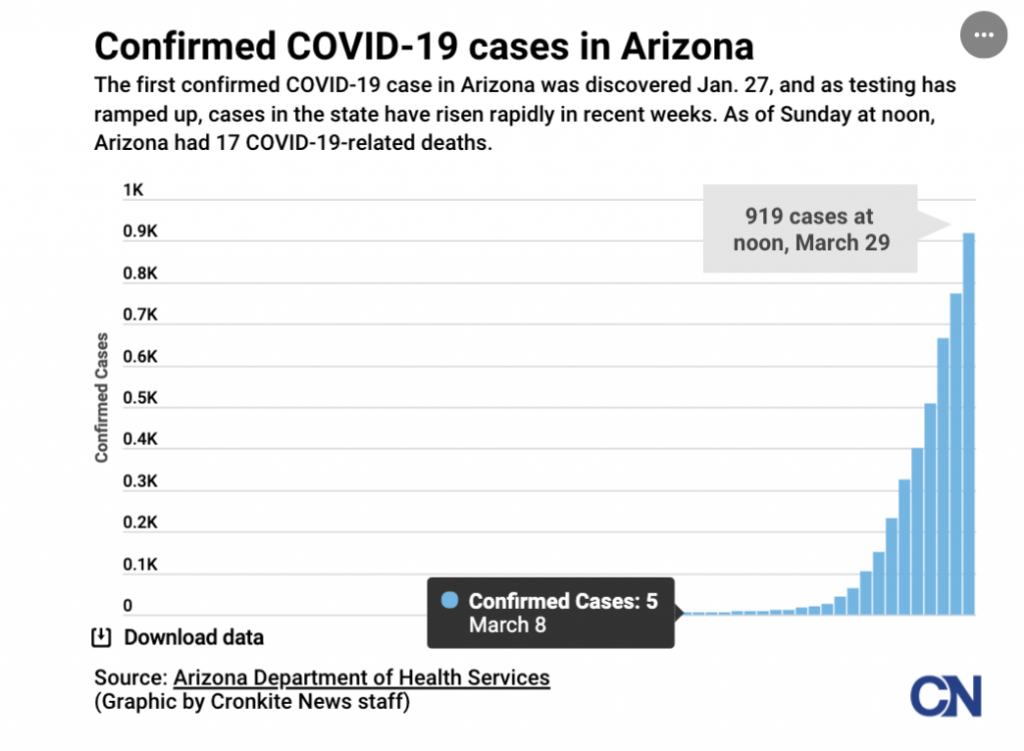
Covering coronavirus is a nearly overwhelming challenge for newsrooms: too much news to cover; so many operational logistics to overcome due to social distancing; so many ways in which we are not just reporting on the story but also personally impacted by it, like juggling home-schooling of our kids while working from home, dealing with the challenges of isolation, or caring for (or just worrying about) older loved ones.
In times of crisis, keeping focus is key. A powerful tool for creating that focus is framing coverage through the lens of “Jobs to Be Done.” Clayton Christensen, the Harvard Business School professor best known for his landmark book The Innovators Dilemma, also wrote extensively about serving customers better by identifying the key Jobs to Be Done: People don’t simply buy products or services, they ‘hire’ them to make progress in specific circumstances… Understanding the “job” for which customers hire a product or service helps innovators more accurately develop products that align with what customers are already trying to accomplish.
The best Coronavirus coverage by local TV newsrooms right now fits this framework. Three essential “jobs” stand out:
Inform.
Connect.
Empower.
Here are examples of how local newsrooms are focusing their efforts and community impact to deliver on these three “jobs to be done.”
- Inform
Informing our audience is both obvious and fundamental. But information overload is real. Using data and social listening can help newsrooms insure they are focused on providing the information most critical to their audiences. Google Trends is a powerful tool newsrooms can use to see exactly what information people in their community are searching for. Examples of the most commonly-sought coronavirus information include:
Data on local case count, updated daily, like this visualization from Cronkite News:
Arizona daily Coronavirus case count.

Google Trends makes it easy to identify the most common questions. Many stations have created stories and Frequently Asked Questions (FAQ) lists to make it easy for viewers to find those answers.
FOX31 Denver: List – What’s Open and Closed in Denver
WIVB Buffalo: How to disinfect your mobile phone
KVOA Tucson: Where you can get tested for COVID
It’s one thing to report the news. It’s another to help viewers understand what it means. Explainers help viewers put the news in context, like this example from KENS in San Antonio showing What the Federal Stimulus means to you; or this story by Cronkite News on How and Why Viruses ‘Go Viral.
Fact-Checking is another foundation of informational coverage, like this story by
KCRG in Cedar Rapids on Evaluating social media tips on Coronavirus. An important caveat. The challenge with fact-checking is to debunk without amplifying. In the words of Claire Wardle of First Draft, to avoid giving oxygen to rumors, as outlined in our previous Cronkite News Lab article on misinformation reporting.
2. Connect
Physical distance has become the new reality for many of us. Social isolation is the unfortunate side-effect. Bringing the community together, even if virtually, is something local broadcasters are especially well positioned to do. Local newsrooms have found creative ways to connect with their communities, and to connect residents with one another.
One simple “connection” message is showing we’re all in this together, and encouraging healthy choices.
“I want to see you again, stay in your home,” — lawn in northwest Bakersfield. pic.twitter.com/qk7qOAcy4u
— Bayan Wang (@bayanwang) March 25, 2020
Reporters at KGW in Portland (disclaimer: Proud alum) and at many other stations have documented how they are ‘walking the talk’ by also adopting social distancing.
A game plan doesn’t work unless EVERYONE buys in… & my @KGWNews teammates are ALL IN on this one!
Enjoy the weekend, be safe & think about other people??#SocialDistanacing #TogetherApart @Maggie_Vespa @NinaMehlhaf @LauralPorter @AshleyKorslien @CassidyQuinn @BrittanyFalkers pic.twitter.com/aqYRCe34kq— Drew Carney (@DrewCarney) March 21, 2020
Connection includes giving the community a voice. Stations are finding imaginative ways to foster that virtual connection. KOMO in Seattle streamed a live Mental Health live chat Q & A.
WDIV in Detroit is using the audience engagement platform Hearken to solicit questions from its audience, and then answering through a trusted local expert in a series called Ask Dr. George.
AT WCNC in Charlotte and elsewhere, TEGNA stations are using text messaging to invite and answer audience questions in real time.
Here at Cronkite News, out of a preponderance of safety, our ASU student journalists aren’t allowed to go into the field to report. So they’ve been using Tagboard to curate the social conversations happening among audiences here in Phoenix.
Local news stations are even finding ways to safely support our emotional need to connect. KTRK in Houston has been offering “virtual hugs” and shoutouts to viewers, with hundreds of viewers responding and great audience feedback.
Perhaps the most impressive connection has been where local news stations in a market have banded together, prioritizing collaboration over competition, to serve and connect their community.
Illinois TV and radio stations united in a statewide fundraising drive to combat hunger, food bank shortages amid the COVID-19 pandemic. In Atlanta, stations came together for a joint Governor’s Town Hall broadcast across the market. TV stations in Austin, Texas are among the latest to announce a collaboration.
3. Empower
The World Health Organization has declared Coronavirus a pandemic. As of March 26, the U.S. became the global epicenter, with more cases than any other country. These are facts that could scare a reasonable person; and, the global scale of this crisis can easily be overwhelming, leaving individuals feeling powerless. Local newsrooms have been going beyond “just the facts” to play a role in empowering their communities by also reporting on acts of kindness, and on what residents CAN do during the crisis.
WABC in hard-hit New York is helping residents replace fear with news they can use, and act on, including: how to make homemade face masks to fulfill shortages during COVID-19 pandemic; how to file for unemployment insurance amid the COVID-19 pandemic; and, the right way to deep-clean your home to stay safe from coronavirus.
Another way local news stations are making a difference is by telling the stories of neighbors helping neighbors.
Today I’m following along (6 ft. behind) a couple of middle school girls who are grocery shopping for those who can’t or don’t want to go to the store right now. They said they make about 5 runs each day. They can’t drive so they walk or bike. #News3Now #coronavirus pic.twitter.com/bsKkvbz73F
— Gabriella Bachara (@GabbyBachara) March 19, 2020
WGBH Boston has prepared a detailed list of Do’s and Don’ts on how you can help your neighbors. And KTRK in Houston is keeping a running update on Who’s hiring in Houston to empower those who’ve lost jobs to find replacement income.
Wisely, local news stations have gone beyond just the hard-news aspects of empowerment to also address lifestyle needs. WPVI Philadelphia put together a roundup of Philly area fitness studios offering online workouts that can be streamed at home. Recipe-sharing abounds. Cronkite News reporter Madison LaBerge created this thread of apps for comfort, learning and entertainment during quarantine.
With residents in so many communities across the U.S. restricted, there is a long list of things we can’t do. These reports by local news outlets on what residents can do are truly empowering. Though not traditionally a part of journalism, empowerment is a crucial ‘job to be done’ right now.
For busy and near-overwhelmed newsrooms, there’s an important corollary: If it doesn’t serve one of these jobs, it can wait. Saying NO to some things is essential during this crisis, in order to have the capacity to say YES to the most important things. I’ve written previously for Cronkite News Lab about the importance of creating (and updating as needed) a STOP-doing list, to offset and create capacity for the truly essential work.
Audiences are hungry for information on coronavirus, as the spikes in online news traffic and TV news viewership prove. In many ways, as my colleague Andrew Heyward has noted, the coverage response has been one of finest hours for local news. As journalists and leaders, we recognize our communities need us now. We have the audience reach, the audience’s trust, and their attention. As the examples above illustrate, we can best achieve our mission to serve by focusing on the three core ‘jobs to be done’: Inform. Connect. Empower.